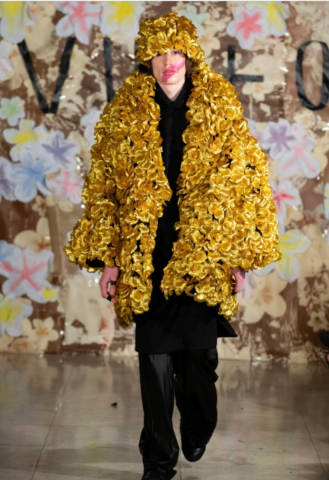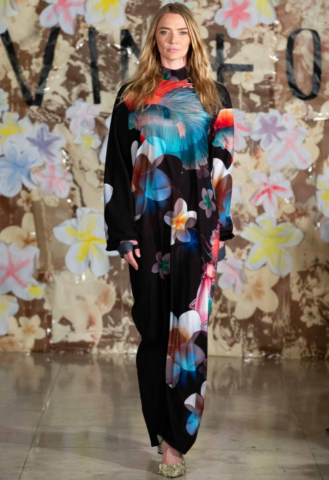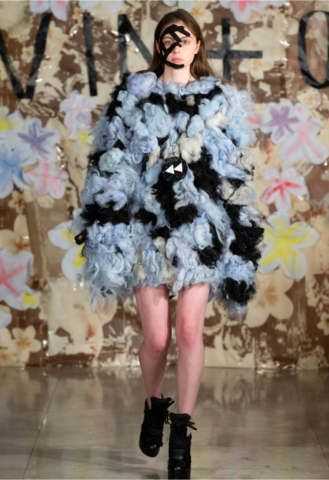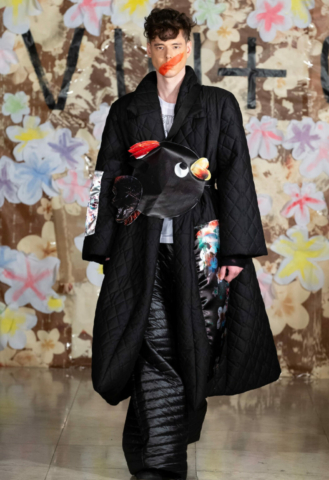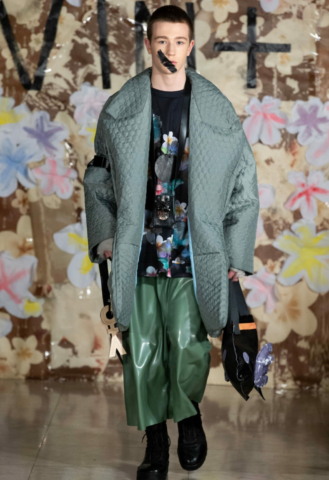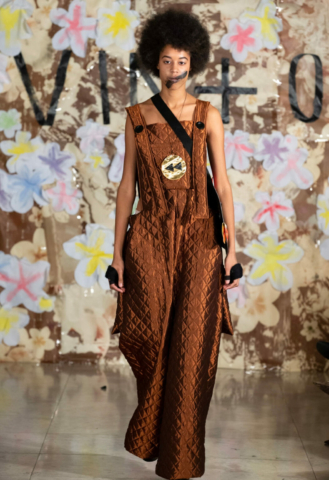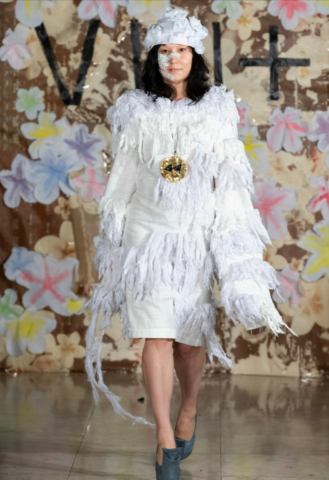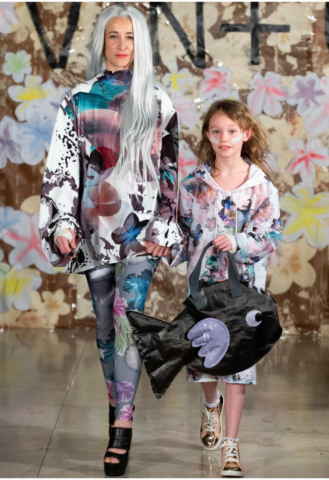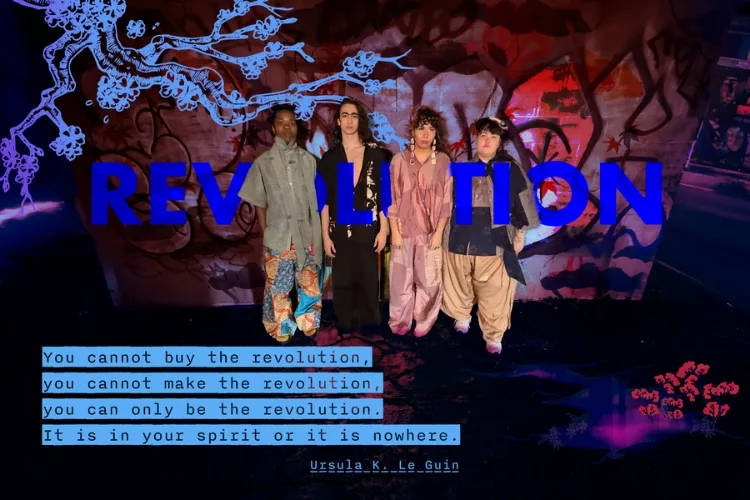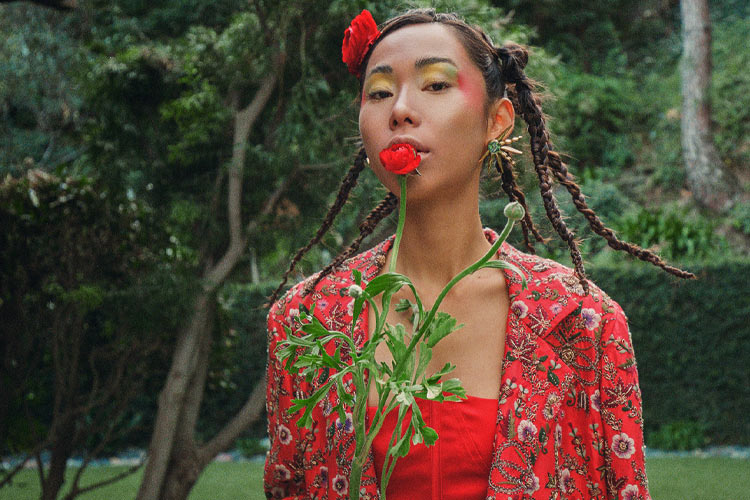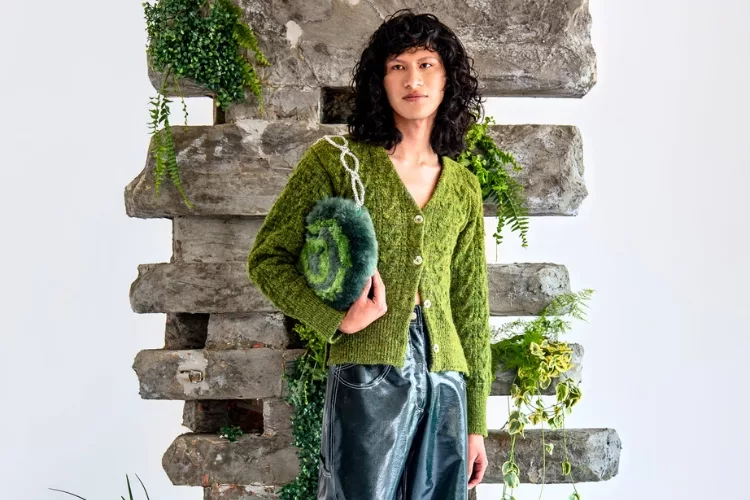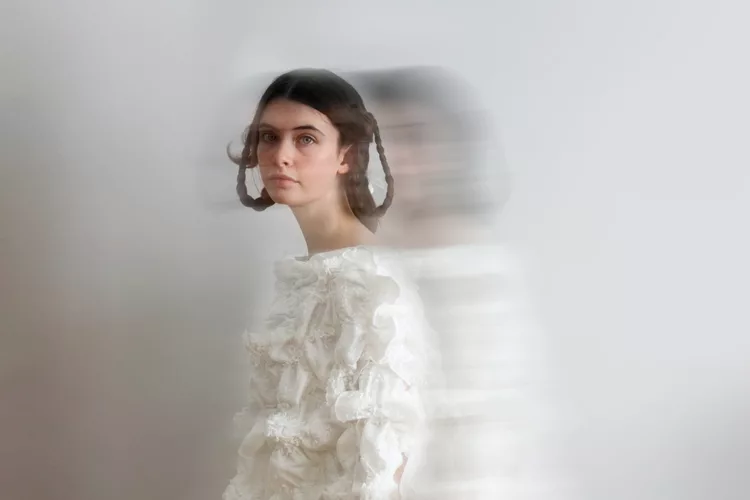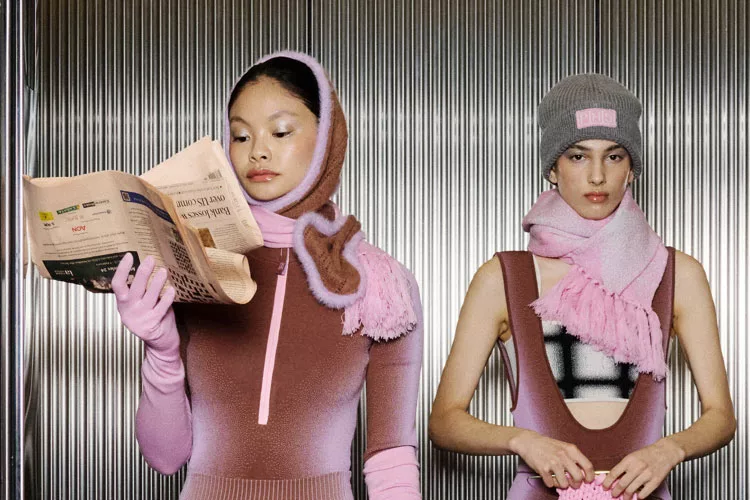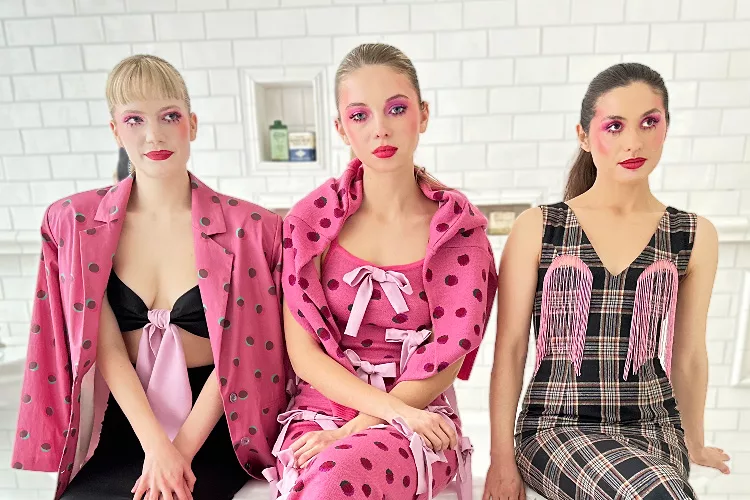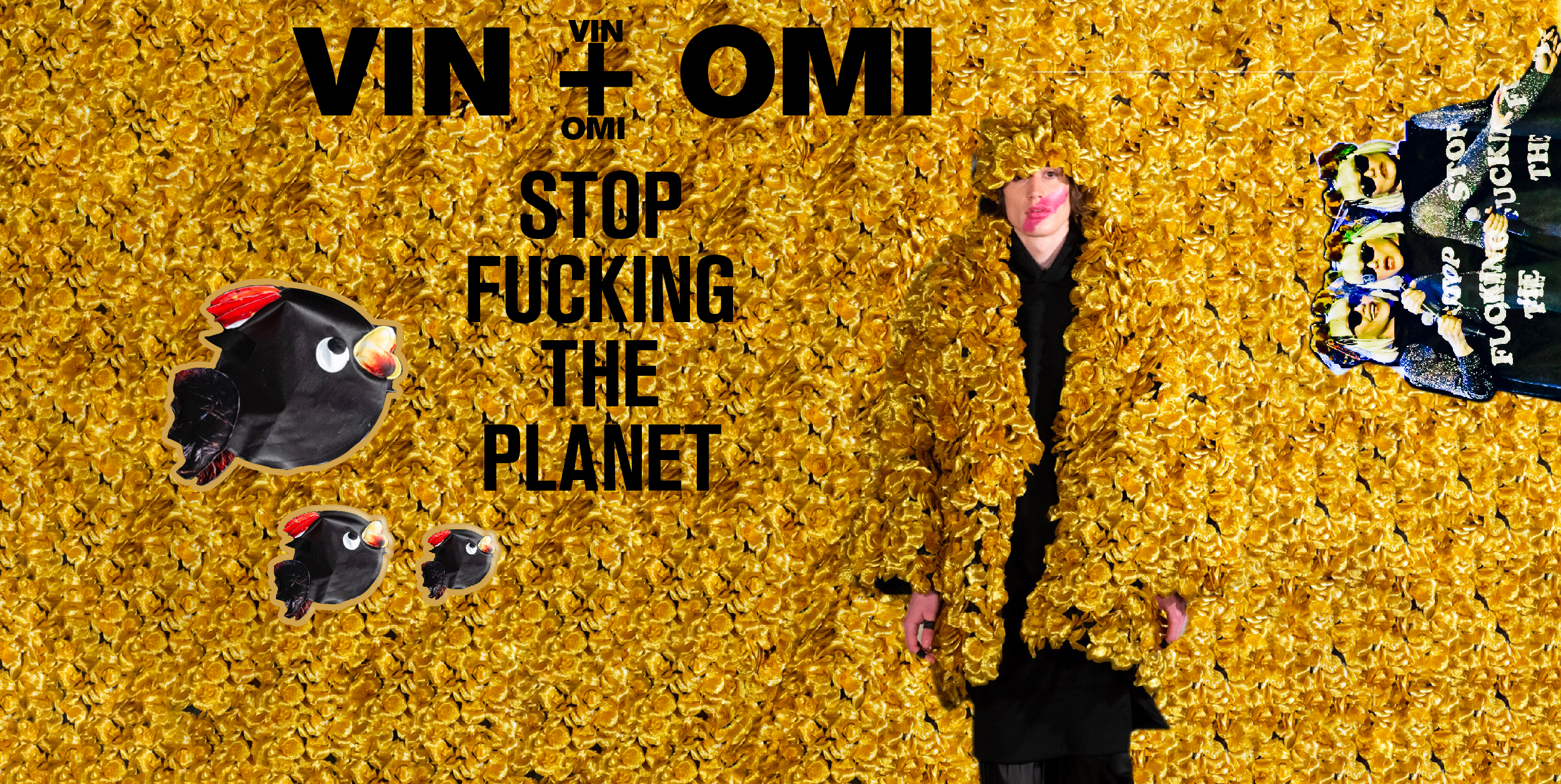
Vin + Omi are not your typical fashion designers. They never formally studied fashion, (Vin was trained as a sculptor and Omi was one of Singapore’s leading photographers.) and choose to live in the countryside with their two dogs instead of the hub of London. Fiercely committed to sustainability since before it became “a thing”, they’ve worked diligently to create their own nontoxic materials.
Their recent show include dresses made from organic nettle, cow parsley and linen fabric from the English Cotswolds and chunky knitwear fashioned from “combed-off” alpaca wool. The accessories included fish shaped bags from old vinyl film posters donated from outdoor media owner Ocean Outdoor who they are currently collaborating with as well. Despite the unusual materials, the clothes themselves are beautiful and wearable proving fashion with a capital F and sustainable innovation are not mutually exclusive.
So you’ve just completed your 14th show/collection! How long have you worked together?
We’ve known each other for about 18 years now, but VIN + OMI started in various forms in 2004 in an organic way. For us, joining forces is definitely a strength as we share the stresses and our skill sets complement each other .
We work on everything together and make all creative decisions as a duo. Running things past each other is very important, sometimes one of us can have an idea and it can be the other one’s job to talk him out of it!
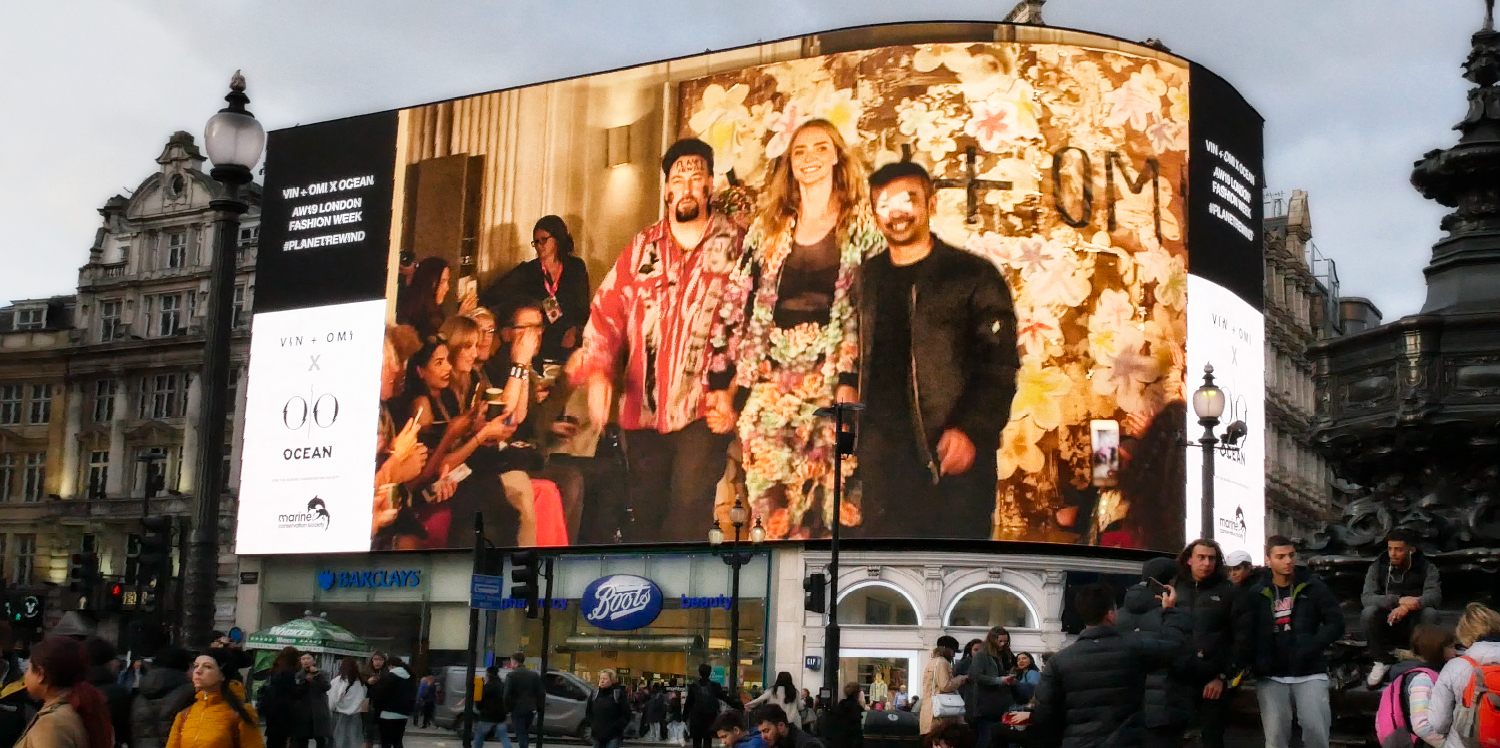
Omi has Aspergers and this adds an extra dimension to the mix. We both often come at designing new collections from a different direction but we always meet in the middle .
I am completely fascinated by your experiments in creating new fabrics. From plastic to no kill fleece to a sustainable latex to organic plant fabrics and leather… I am normally impressed when I hear about someone creating…a single new vegan leather for example -but you all are creating multiple textiles! How did you begin?
We’ve always operated out of common sense. When we started, Omi was getting into constructing garments and accessories from latex. We wanted to be holistic and make sure the materials we used fitted our way of thinking. Latex, like most textiles pass through a few agents before they are in the hands of designers – so we wanted to see where latex came from and how it was made. As Omi is Singaporean we looked at a few latex plantations in Malaysia and we were shocked at the conditions the workers worked in and also the non-organic, non-sustainable way in which the plantation was run. We decided that we were in fashion for the long haul and invested in a small plantation in Malaysia that we still own today. That early exploration into how a textile originated and how we could influence its journey and impact on the planet has stayed with us for a long time.
After our experience with latex we decided to look at all of the textiles we work with, how we produce our collections and how everything we do as designers and business owners has an impact.
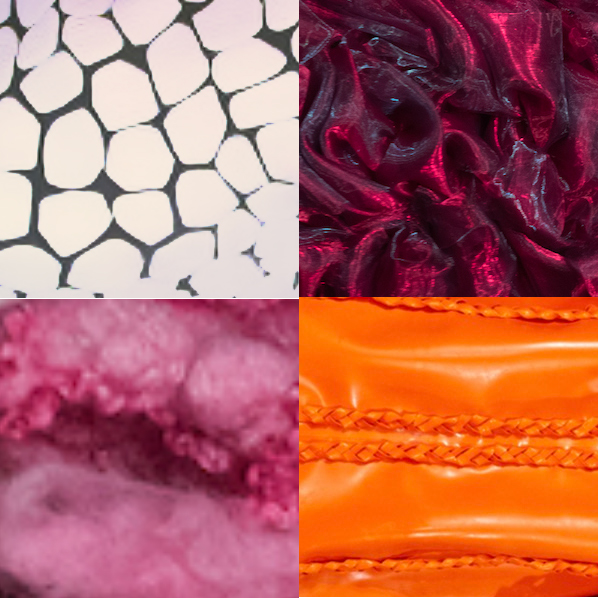
Materials that have been developed by Vin + Omi.
Textiles clockwise from top left: Amalgam, rPET, latex, no kill fleece
Can others access the materials you’ve developed?
We have almost daily requests for our textiles, but we are primarily designers and not textile producers. We are now working with the right retailers and when we work out the lines we will be selling we will produce enough for our needs. We may start selling our textiles separately after we have nailed down the fashion retail lines but it’s essential for us not to over produce
How did you become aware of environmental issues? (you seem to have done so earlier than many others)
I think, for me ( Vin ) primarily, growing up in the countryside and for both of us having a studio in the middle of the English countryside for the last 12 or so years has helped focus us on environmental issues. Also prior to working full time on VIN + OMI I was Director of Public Art for a large chunk of England. We installed many public artworks and I made sure that each scheme had a smaller community scheme attached which focused on an environmental or social impact project. I suppose we both became aware then what a difference a community, charity, or group of people could make. Each of our textile projects has a social impact project attached. For example, we are working with the Riverkeeper project in NYC. We are turning salvaged plastic from the Hudson River into garments for the organization. Our last collection Planet Rewind worked with 22 organizations and groups across the UK who collected plastic bottles for us.
We also introduced a new label at the show; a collaboration with Ocean Outdoor. This collaboration announcement culminated with highlights of the show being featured on the Piccadilly Circus screen ( London’s equivalent of Time’s Square )
The typical definition of success in fashion is sales but with your commitment to sustainability I imagine you define it somewhat differently – so how do you define success for VIN + OMI?
We define success in many different ways, for this initial phase of our development monetary success hasn’t been the focus. The traditional way fashion companies start does not work anymore. Traditionally, fashion companies are taught to do a show, get buyers and sell, sell, sell. The problem is that model does not often work. The vast majority of new fashion companies over commit and crash financially in the first or second year. We refused to be part of that group that have no longevity.
Success for us to date has been many things such as:
- The development of each unique textile
- The discovery of new processes
- Clearing up vast areas of waste plastic and initiating schemes globally
- The successful collaboration with a community or charity
- The successful development of our plantation in Malaysia and our funding of the workers family education programs.
- Mentoring 60 + interns and assistants every year
- Raising awareness of environmental /social issues
- Great collaborations with companies and celebrities.
- The wide reach and impact of the Stop Fucking The Planet garments that Debbie Harry wears.
…and like most designers, there’s a sigh of relief after a successful show, such as our taking over St Pancras rail station!
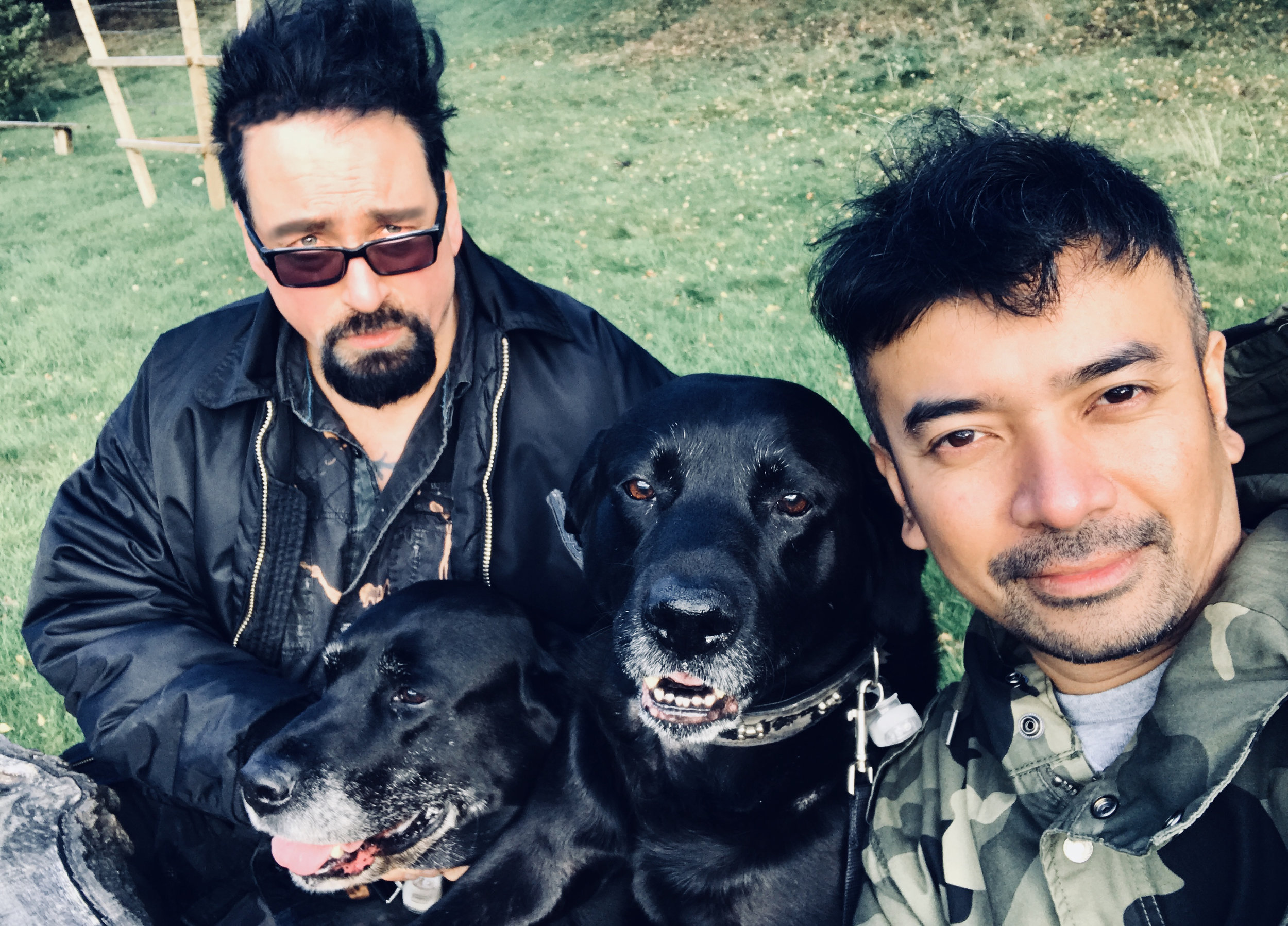
What is an Ideal day for Vin and Omi
The cliche ‘ no two days are the same’ is actually true here. We have so many varied projects and processes on the go that every day is unpredictable. What is a constant is the stream of morning emails. It can hit 5/600 a day leading up to show. Yesterday, for example, we had meetings with sponsors ( we had 22 sponsor / partners for our last show ), Skype meeting with 2 salvage collection projects, designed and made a stage outfit for a musician, walked the dog twice, work on our retail line and two collaborative lines, telephone discussion with a government department about a plastic collection project, work on an art exhibition we are contributing to… Every day is different.
Well I’m sure you’re never bored! Within all of these directions is something your favorite –that you find most rewarding?
It’s funny but we have been given some high profile projects which in theory should have been really rewarding but for various reasons don’t deliver in the satisfaction stakes – or worse have been a total nightmare. We find that a lot, that big projects often disappoint and we often keep quiet about things we have done if we are not happy with the end feeling. What WAS and still IS rewarding was coming up with the Stop Fucking The Planet slogan which was inspired and commissioned by Debbie Harry. Debbie wore it initially for the Q awards in London then we have made her a series of capes that have been worn onstage in many of the gigs in the last few years. Which means the direct stadium audience is in the hundreds of thousands and much much more globally, so it’s great to see that message spread so wide.
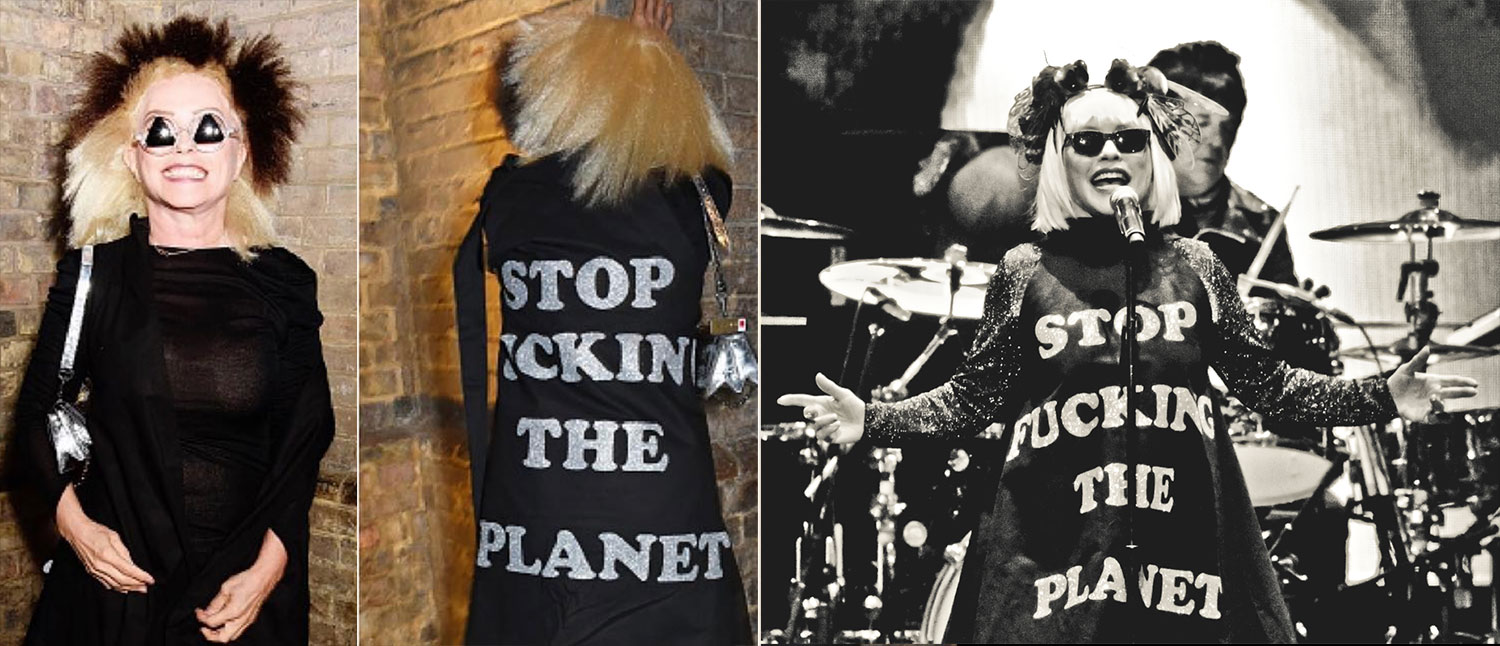
While I’m mentioning celebrity – we only work with celebrities with a conscience / morality. We’ve worked with many celebrities over the years but currently choose to keep it to a smaller group that care. Debbie Harry, Jo and Leah Wood, Jodie Kidd, Jane Horrocks are women we are currently working with, all planet caring women with super morals.
If someone asked you what 3 things they could do to help the world what would you say?
- Actively DO something rather than just saying something. If you can go out there and do something to help the planet, whatever it is.
- Recycle your own clothing and make it last. Buy carefully, use a microfibre catcher in you washing machine.
- Think carefully about where your everyday waste goes.
Advice for young designers starting out now?
Soon all fashion brands will HAVE to think eco – so start out that way, think carefully about where your textiles come from and how you run your business to be eco savvy
DON’T feel that you have to do fashion shows -which cost a fortune- and don’t feel you have to do ANYTHING the same way as anyone else!
wrapping it up with a few of their favorite things…
OMI first / VIN second
Book : WINNIE THE POO / TENDER IS THE NIGHT
Movie/Series: GOOD WILL HUNTING / SIX FEET UNDER or STAR TREK
Creative Inspiration: NEGATIVE SPACES / EVERYTHING
Food: CHILLI / PIMENTOS PADRON
Trend that you like: COMFORTABLE CLOTHES / ELEMENTS FROM MOST
Trend that you hate: PEOPLE THAT TRY TOO HARD / STEAMPUNK
Quality in a human being: KINDNESS / MORALITY
Person you admire: DAVID ATTENBOROUGH / ANYONE WHO CARES WITHOUT A SCENARIO
Quote to live by : STOP FUCKING THE PLANET / STOP FUCKING THE PLANET / THOUGHT IS THE NEW RELIGION

